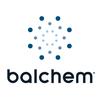Explore all the information on
Dairy cattle nutrition
Welcome to the page about Dairy cattle nutrition of Engormix; a source of knowledge on Dairy cattle nutrition.
Research conducted at the US Dairy Forage Research Center in Madison (WI) has shown the potential for improving milk nitrogen (N) efficiency by more than 20 % through balancing amino acids and reducing crude protein levels fed. Milk nitrogen efficiency is a measure of how much of the protein (hence nitrogen) fed appears in milk versus being wasted and posing environmental challenges. Experimental Design The forage base consisted of alfalfa silage (21 % of DM) and corn...
Comments : 18
Recommendations: 10
A challenge many producers face with their dairy cows is deciding which ingredients to feed them. Is it possible to improve the performance of dairy cows using the right ingredients? The answer is YES! Previously, I discussed how dry extruded corn is a highly digestible source of rumen degradable protein and energy for dairy...
Comments : 1
Recommendations: 1
.jpg&w=3840&q=75)

Sustainable dairy production with Evonik's amino acid balancing approach
Suggested link
Evonik’s animal feed solutions quench livestock thirst and reduce the environmental impact of meat and dairy production WHITEPAPER According to the UN, four billion people experience severe water scarcity for at least a month a year – and due to our unsustainable use of freshwater and other resources, water stress will increase further. One of the drivers is water-intensive meat and dairy production, which accounts for roughly a quarter of the global water...
Comments : 0
Recommendations: 1
NiaShure is rumen-protected to shield the niacin from microbial degradation in the rumen while allowing release further down the digestive tract. Research shows that as much as 95% of raw niacin is broken down in the rumen. Balchem’s proprietary encapsulation process ensures that NiaShure reliably delivers significantly more niacin to the intestinal tract than raw niacin. ...
Comments : 0
Recommendations: 2


Choline Today, Euros Tomorrow And Possibly for Generations to Come
Suggested link
Bradley “Scott” Sorrell, Director of Global Marketing, Animal Nutrition & Health at Balchem, shares his thoughts on the relevance of Choline for animal nutrition ...
Comments : 0
Recommendations: 2
Introduction The rise in milk production has been accompanied by increasing incidence of health problems, declining ability to reproduce and declining the fertility of modern dairy cows. The transition from late gestation to early lactation is viewed as one of the most challenging elements of the production cycle. Perhaps the most important physiological change occurring during this period is the decrease in dry matter intake around...
Comments : 6
Recommendations: 8
...
Comments : 0
Recommendations: 1
Introduction Automation can be defined as technology that allows for a process to be performed automatically, with minimal human input. The adoption and use of automation in the dairy industry has grown dramatically in the past decade. Much of the automation adopted has been associated with milking and other aspects of barn management. There is also growing interest and adoption of automation in feeding of dairy cattle. Specifically, the use of automation in feeding of lactating...
Comments : 0
Recommendations: 3
.jpg&w=3840&q=75)

Sustainable dairy production with Evonik's amino acid balancing approach
Suggested link
Introduction Precision nutrition aims to design nutritional recommendations in order to increase metabolic efficiency, reduce costs, improve product quality, minimize environmental impact while improving the health and well-being of dairy cattle at the individual level. According to Gonzales et al. (2018): “Precision animal nutrition requires the application of principles, techniques and technologies that automatically integrate biological and physical processes...
Comments : 0
Recommendations: 2
Introduction Biological rhythms are repeating patterns that are driven by time-keeping mechanisms within the animal and are adaptive as they coordinate physiology and metabolism with the external environment. The dairy cow has a well-recognized natural daily pattern of feed intake and milk synthesis and an annual rhythm of milk composition, but regulation of these rhythms has not been well described in the literature or well considered in current dairy management. We commonly...
Comments : 0
Recommendations: 1


Choline Today, Euros Tomorrow And Possibly for Generations to Come
Suggested link
Background Balchem now manufactures a high-quality, ruminally protected choline product called ReaShure®-XC Rumen Protected Choline, the next generation of ReaShure which provides bioavailable choline in a more concentrated product. At calving, dairy cows go from a period of positive energy balance to negative energy balance. There is a surge in blood non-esterified fatty acids (NEFA) at calving, due to the stress and the hormonal changes associated with...
Comments : 0
Recommendations: 2
Our Dairy NRC series of Real Science webinars was very well received and we are talking about the chapter on protein and amino acids. ...
Comments : 0
Recommendations: 5
NO COMPROMISE - NO GREY AREA. Whether in its formulation, purity, bioavailability, reliability, stability, safety or benefits, Selisseo® never compromises to achieve excellence. Make a definitive choice on selenium supplementation for your herd, choose Selisseo® for no compromise on performance!...
Comments : 0
Recommendations: 1
Methionine (Met) and choline (Chol) supply in dairy cows continues to be of interest Historically emphasis on: Milk protein (Met) Liver lipid metabolism (Met and Chol) More recently, i.e. from 1990s to present, interest shifting to supplementation during the transition period: Feeding higher-energy diets Reducing diet CP Health, etc Considerations for “Methyl donor” supplementation...
Comments : 2
Recommendations: 1
.jpg&w=3840&q=75)

Sustainable dairy production with Evonik's amino acid balancing approach
Suggested link
...
Comments : 1
Recommendations: 3
The global liquid feed market trends suggest a fast-paced recovery from the losses incurred due to the COVID-19 pandemic, as manufacturers have been signing mergers, partnerships, and acquisitions worldwide. Over the next few years, the consumption of supplements such as trace minerals, vitamins, fats, phosphoric acid, and urea in animal feed products is poised to see an uptick, thanks to the rising support from government incentives and programs.
By 2027, the ...
Comments : 0
Recommendations: 0


Choline Today, Euros Tomorrow And Possibly for Generations to Come
Suggested link
Do you want to know more about palatability? This #HelpingNutritionHappen series is made for you! With a heritage of over 50 years, Adisseo has developed different solutions, in particular to stimulate voluntary feed intake and encourage the natural behavior of animals. Listen to Ab Grever, Category Manager for our palatability business to learn more!...
Comments : 6
Recommendations: 2
Hello, We have 20 HF cows in our farm which are at second lactation. We feed them corn, alfalfa, pellets, mineral mixture.jowar forage. The problem we are facing is that cows don't have the require body weight and this results in low milk production ie 10liter/day.
It would be helpful if you can guide us with nutrient and feeding management.
Thanks ...
Comments : 0
Recommendations: 0
Many European dairy farmers suffered a lot from the bad milk price situation in the past few years. Fortunately, prices have stabilized over the last two years and farmers look to continue to be profitable. Nonetheless, a more volatile price situation for dairy...
Comments : 3
Recommendations: 8
Introduction Gut health is intrinsically linked with animal health, which in turn dictates cost efficient production. Animal health and productivity are intrinsically linked, as are gut health and animal health. In many diseases, diet is implicated as a contributing factor by having direct effects on host metabolism, immune responses, and microbiome composition, subsequently altering disease susceptibility (Plaizier et al. 2018). Gut health is defined...
Comments : 0
Recommendations: 2




















